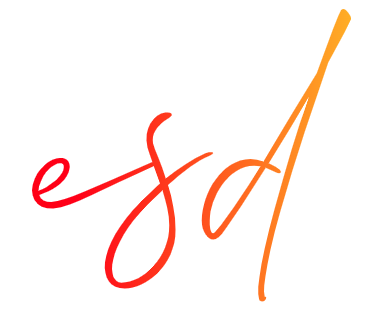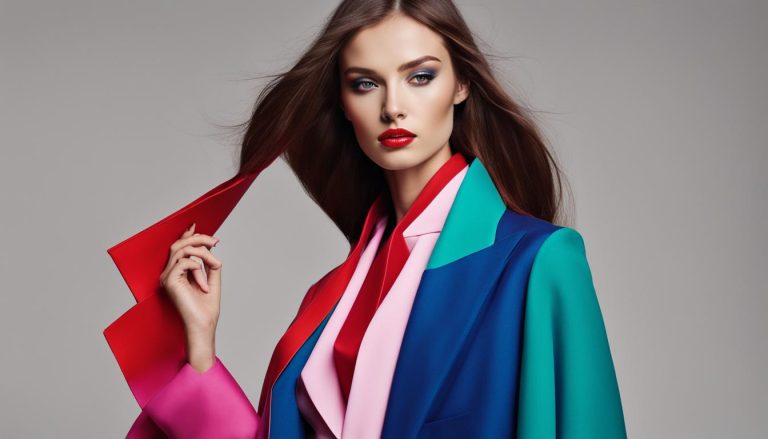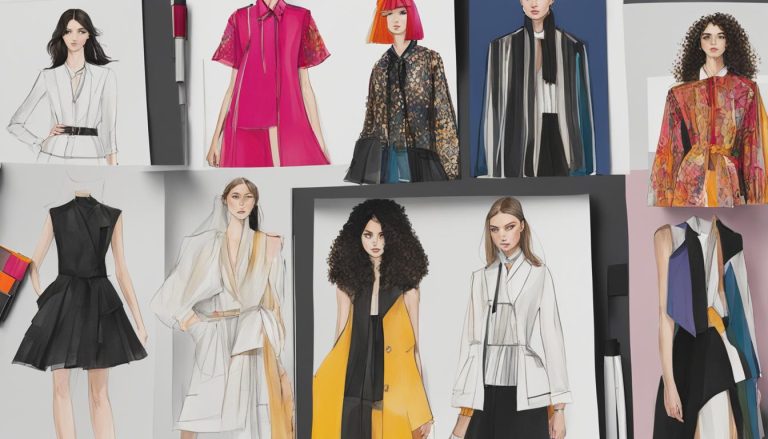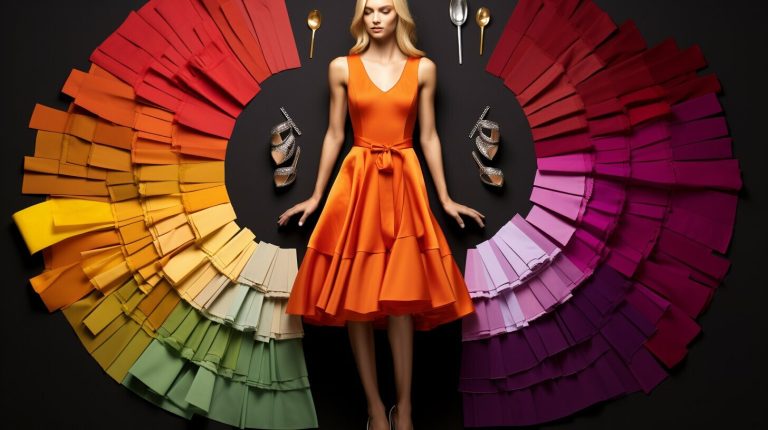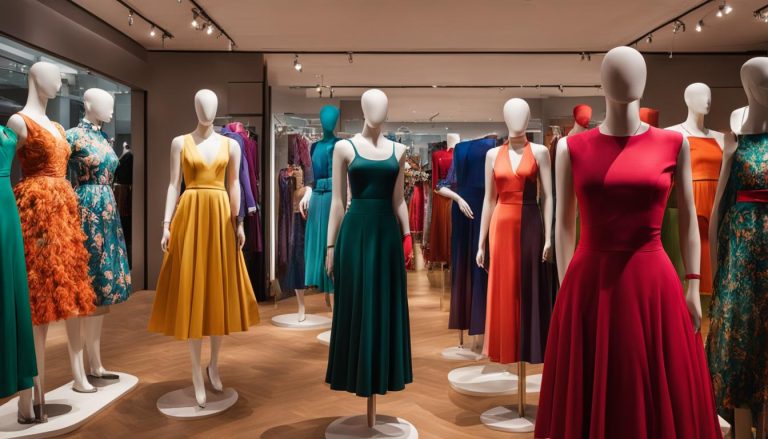Fashion Color Theory: Skin Tone Matching Guide
Have you ever wondered why certain colors look great on your friend but not on you? Or why some outfits seem to make your complexion glow while others leave you looking dull? The answer lies in fashion color theory and how it relates to your skin tone.
Understanding your skin undertones and learning how to choose colors that complement your complexion can make all the difference in your personal style. With the right knowledge, you can create a fashion-forward wardrobe that enhances your natural beauty and leaves you feeling confident and stylish.
The Importance of Fashion Color Analysis
When it comes to creating a harmonious and visually appealing wardrobe, understanding your color palette is crucial. Fashion color analysis is a process that involves identifying which colors complement your unique coloring, including hair, eye, and skin tone. By discovering your ideal color palette, you can create a wardrobe that makes you look and feel your best.
Your color palette will help guide your fashion choices and ensure that you’re selecting clothing items that flatter your complexion. Not all colors look good on everyone, so by determining your ideal hues, you can avoid making fashion mistakes and create an effortlessly chic wardrobe.
| Fashion Color Palette | Description |
|---|---|
| Spring | Bright, warm colors such as peach, coral, and golden yellow. |
| Summer | Cool, muted colors such as lavender, powder blue, and rose pink. |
| Fall | Warm, rich colors such as olive green, burnt orange, and deep brown. |
| Winter | Cool, bright, and bold colors such as royal blue, emerald green, and ruby red. |
By considering your skin tone and undertones, you can determine which seasonal color palette best suits you. For instance, if you have warm undertones, you’ll likely look best in fall or spring colors, while cool undertones may be better suited to winter or summer shades.
Understanding fashion color theory is also essential in creating a cohesive wardrobe. By identifying your color palette, you can choose clothing items that complement each other and create a polished and put-together look. By incorporating complementary colors and various shades of your ideal hues, you can create a visually dynamic wardrobe.
Overall, fashion color analysis is a vital aspect of creating a harmonious and visually appealing wardrobe. By determining your ideal color palette, you can make informed fashion choices that flatter your complexion and create a signature style that reflects your personality.
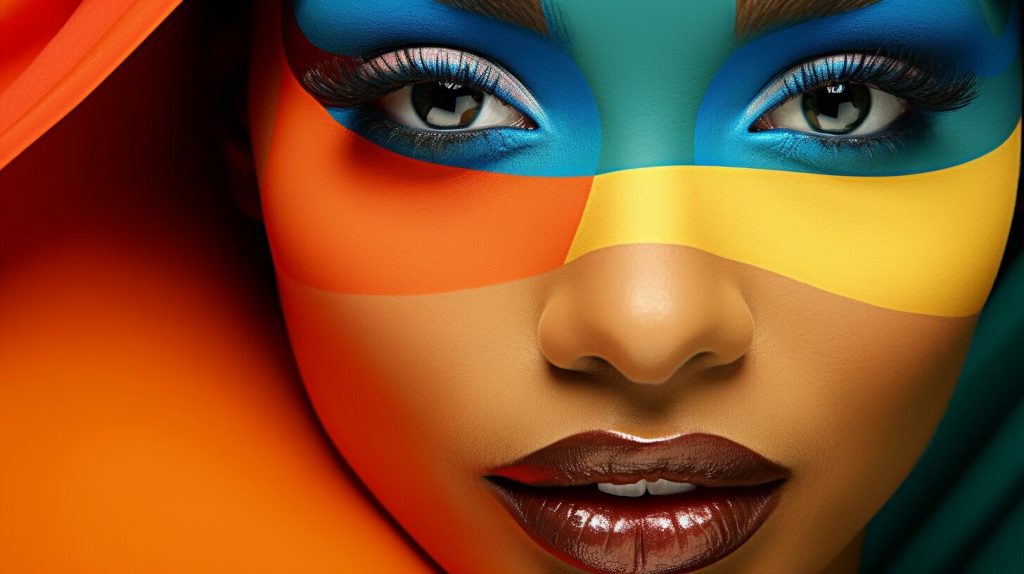
Understanding Skin Tones
When it comes to fashion, understanding your skin undertones can make all the difference in creating a cohesive and flattering look. Skin undertones are the subtle hues that lie beneath the surface of your skin and determine which colors will complement your complexion the most.
There are three main categories of skin undertones: warm, cool, and neutral. Warm undertones have a yellow or golden hue, while cool undertones have a pink or bluish hue. Neutral undertones have a mix of both warm and cool hues.
To determine your skin undertones, there are a few simple tests you can do at home. The first is to look at the veins on the inside of your wrist. If they appear green, you likely have warm undertones. If they appear blue or purple, you likely have cool undertones. If you can’t tell whether they’re green or blue, you may have neutral undertones.
Another way to determine your skin undertones is to look at how your skin reacts to sunlight. If your skin tans easily and rarely burns, you likely have warm undertones. If your skin burns easily and rarely tans, you likely have cool undertones. If your skin does both, you may have neutral undertones.
Once you’ve determined your skin undertones, you can start incorporating this knowledge into your fashion choices. For warm undertones, look for colors like gold, orange, peach, and coral. For cool undertones, look for colors like silver, blue, purple, and pink. For neutral undertones, you can experiment with a wider range of colors.
Keep in mind that these are just guidelines, and ultimately you should wear what makes you feel confident and comfortable. However, understanding your skin undertones can provide a helpful starting point in creating a fashion color scheme that flatters your complexion.
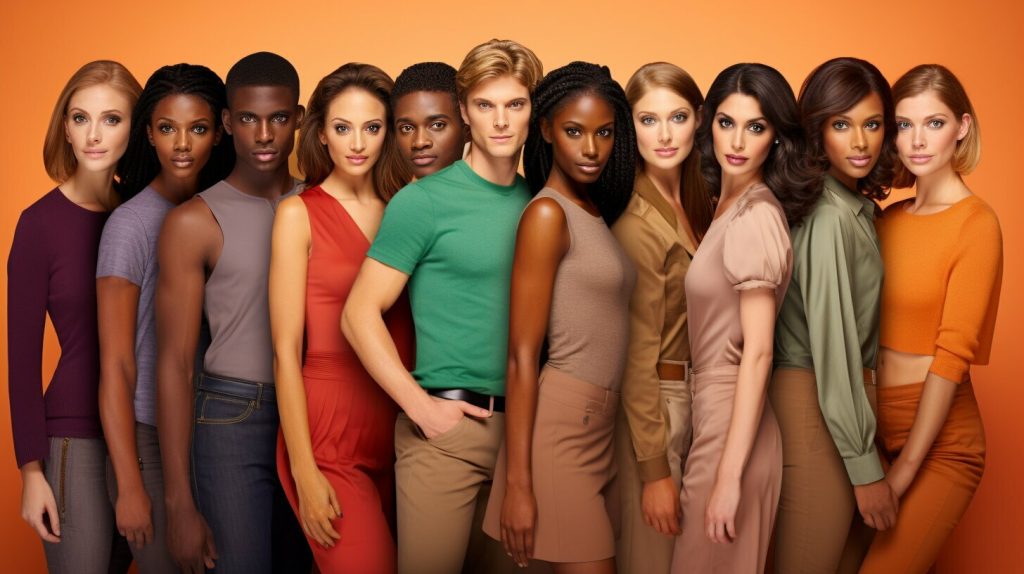
Choosing the Right Colors for Your Complexion
Now that you have a solid understanding of your skin undertones, it’s time to put that knowledge to work and choose the right colors for your complexion. Whether you have warm, cool, or neutral undertones, selecting colors that complement your skin tone can significantly enhance your overall look.
When choosing colors for your wardrobe, start by looking at your skin’s undertones. If you have warm undertones, earthy tones like red, orange, and yellow will bring out the warmth in your skin. Shades of green, blue, and purple with warm undertones like olive or moss will also look great on you. If you have cool undertones, opt for colors like royal blue, emerald green, and magenta. Avoid earthy tones and opt for jewel tones with blue or pink undertones for the best results.
Neutral undertones have the best of both worlds and can wear a broad range of colors. However, be sure to choose colors that complement your skin rather than washing you out. Black, white, navy, and gray are great neutral colors to begin with.
When matching clothes to your skin tone, don’t be afraid to experiment with different shades and combinations. You can create a visually pleasing and harmonious effect by pairing colors with complementary undertones.
You can also take inspiration from nature when choosing colors for your complexion. Look at the colors of the sky, flowers, and foliage for ideas on which colors will bring out the best in your skin tone.
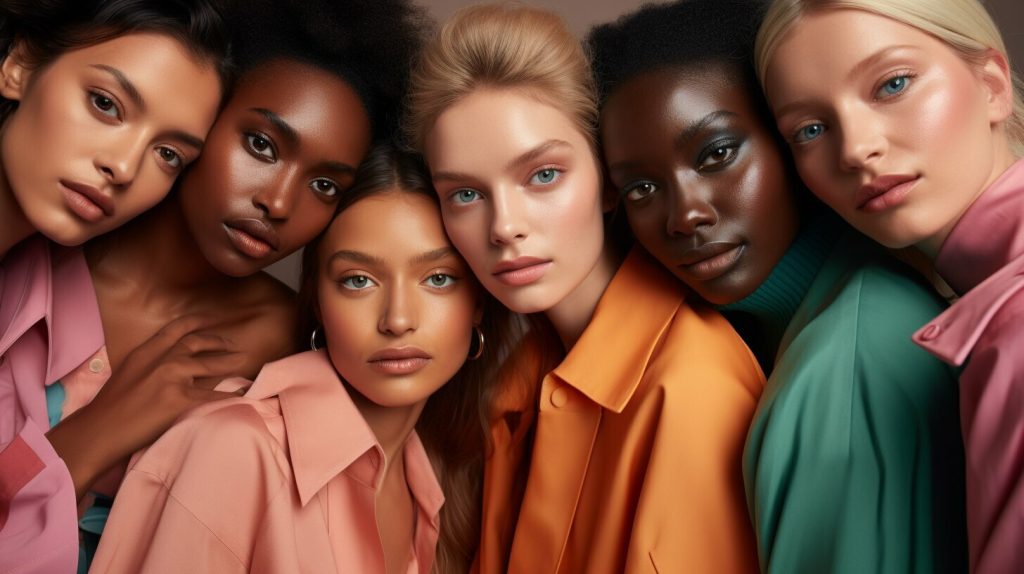
Building a Fashion Color Palette
Building a fashion color palette is an integral part of the design process. By selecting a color scheme that complements your target audience’s skin tones, you can ensure that your designs are visually appealing and flattering.
To begin, consider your brand’s overall aesthetic and the message you want to convey. Think about the mood and emotions you want to evoke in your audience. Once you have a clear vision, start selecting colors that align with your brand’s identity and message.
When creating your fashion color palette, it’s essential to understand color theory. There are several color schemes to consider, including complementary, analogous, monochromatic, and triadic.
Complementary colors are opposite each other on the color wheel and create a high contrast look. Analogous colors are next to each other on the wheel and create a harmonious and cohesive feel. Monochromatic colors are different shades and tints of the same color, creating a subtle and sophisticated look. Triadic color schemes use three equally spaced colors on the wheel to create a vibrant and exciting palette.
When selecting colors, pay attention to the shades and undertones. Different shades can have warm or cool undertones, which can affect how it complements different skin tones. A color that looks vibrant on someone with warm undertones may appear dull on someone with cool undertones, and vice versa.
Use your color palette as a guide when selecting fabrics and materials for your designs. By keeping your color scheme in mind, you can ensure that your designs are coherent and visually pleasing.
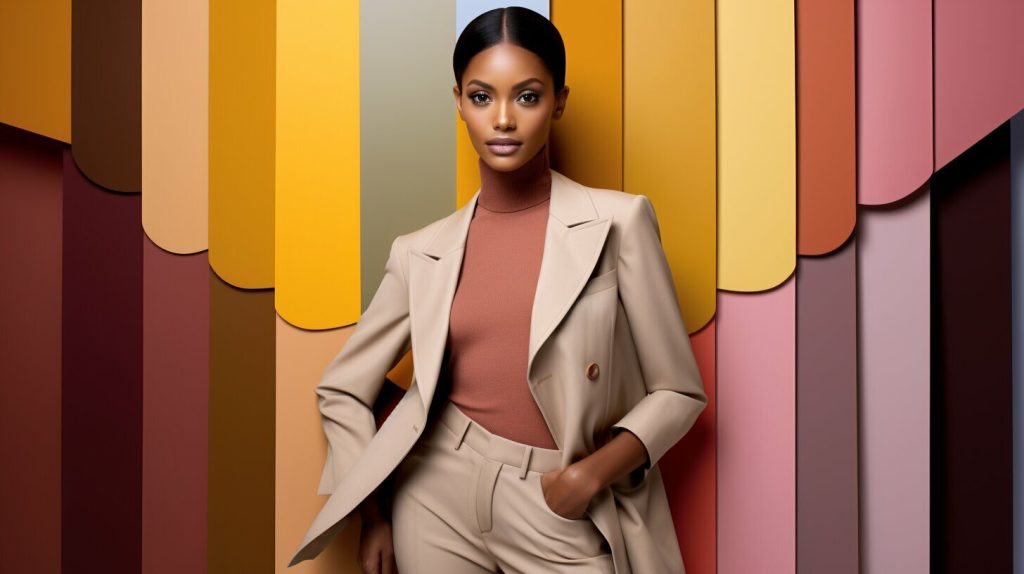
Creating a fashion color palette is an essential step in designing a cohesive and impactful collection. By understanding color theory and selecting colors that complement different skin tones, you can create a versatile and visually appealing wardrobe that resonates with your target audience.
The Fashion Design Process
The fashion design process is an intricate and detailed journey that starts with an idea and ends with a finished product on the runway or in retail stores.
Whether you’re a budding fashion designer or simply curious about the process, understanding the steps involved in bringing a collection to life is essential.
The design process typically begins with conceptualization, where designers gather inspiration from a range of sources, including art, nature, history, and current fashion trends. This helps to inform the creative direction of the collection and sets the tone for the color scheme, fabric selection, and overall aesthetic.
Once the concept is established, designers move onto creating sketches and technical drawings that translate their vision into a tangible product. This typically involves creating multiple versions of each design, experimenting with different fabrics, colors, and details, to ensure the final product is both visually appealing and functional.
| Design Process Steps | Description |
|---|---|
| Conceptualization | Gathering inspiration and establishing creative direction |
| Sketches and Technical Drawings | Translating the concept into a tangible product |
| Fabric Selection | Choosing fabrics that complement the design |
| Garment Construction | Creating the final product through a series of fittings and adjustments |
Fabric selection is a critical part of the design process, as it affects the overall look and feel of the garment. Designers must carefully consider the weight, texture, and drape of each fabric to ensure it complements the design and enhances the final product.
Garment construction involves a series of fittings and adjustments to ensure the garment fits the model or client perfectly. This includes making alterations to the pattern, sizing, and overall shape of the garment until it meets the designer’s exact specifications.

Throughout the design process, color theory plays a vital role in selecting the right hues to complement the design and enhance the overall aesthetic. By applying fashion color theory principles to the design process, designers can ensure their collections are both visually appealing and flattering to a range of skin tones.
Hiring a Freelance Fashion Designer
If you’re interested in creating your own fashion collection but lack the technical expertise or resources to bring your vision to life, consider hiring a freelance fashion designer.
Freelance designers offer a range of services, from concept development and fabric selection to pattern-making and garment construction. Working with a professional can help ensure your collection is designed with color theory, skin tone matching, and overall aesthetic direction in mind.
Hiring a freelance fashion designer can be a smart investment in your fashion business. With their expertise in color theory and design, they can help you create a collection that is both visually appealing and commercially successful.

Color theory plays a significant role in the world of fashion, allowing designers to create visually appealing and cohesive collections. When it comes to fashion, color is not just about aesthetics, but also about highlighting an individual’s natural beauty and enhancing their overall appearance.
Understanding color theory in fashion requires an in-depth understanding of how colors interact with each other, and how they can be used to create harmonies and contrasts. There are three primary color harmonies in fashion – monochromatic, complementary, and triadic. Monochromatic harmonies utilize variations of a single color, while complementary harmonies pair colors that are directly opposite each other on the color wheel, creating a striking balance. Triadic harmonies incorporate three colors that are equidistant on the color wheel, creating a sense of vibrancy and energy.
When it comes to incorporating color theory into fashion, one of the most critical factors to consider is skin tone. Different skin tones can benefit from specific color palettes, with warm undertones working best with warm colors such as reds, oranges, and yellows, while cool undertones benefit from cool colors such as blues, greens, and purples. Neutral undertones can benefit from a wide range of colors, but should avoid colors that are too bright or too muted.
Overall, color theory is an essential aspect of fashion design that should not be overlooked. Whether you are designing a new collection or simply putting together an outfit for the day, understanding how colors interact and complement each other can help you create a cohesive and visually appealing look.
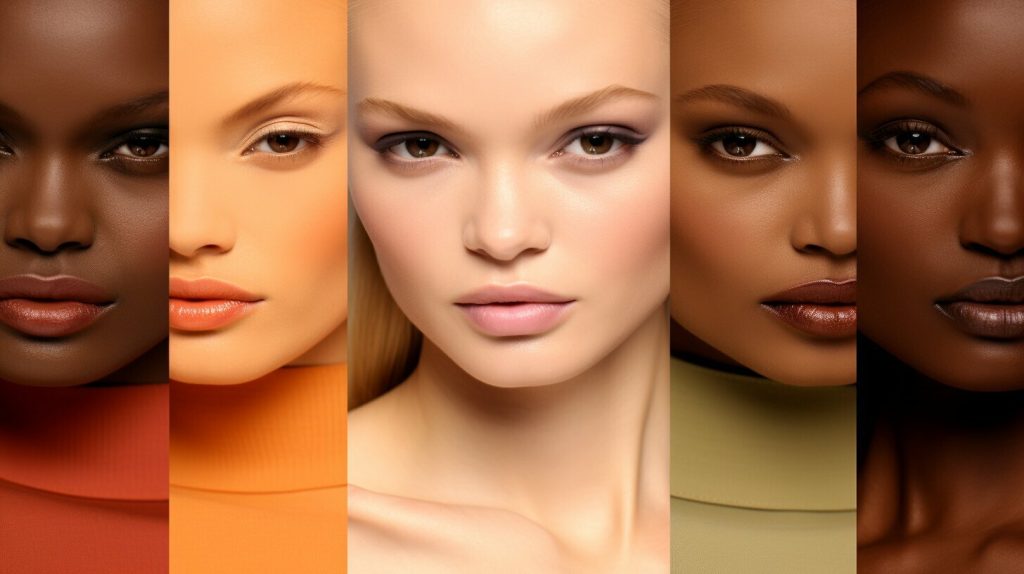
Dressing According to Your Skin Tone
Now that you understand your skin undertones, it’s time to put this knowledge to use and start dressing in a way that enhances your natural beauty and complements your complexion. Whether you have warm, cool, or neutral undertones, here are some useful tips for dressing according to your skin tone:
Warm Undertones
If you have warm undertones, you have yellow or golden hues in your skin. Colors that complement your complexion include earthy tones like brown, olive, and beige, as well as warm colors like coral, peach, and gold. Avoid colors like icy pinks and blues that clash with your warm undertones.
Cool Undertones
If you have cool undertones, you have pink or blue hues in your skin. Colors that flatter your complexion include jewel tones like emerald, sapphire, and ruby, as well as pastel colors like lilac, lavender, and cool blues. Avoid colors like orange and yellow that clash with your cool undertones.
Neutral Undertones
If you have neutral undertones, you have a balance of warm and cool hues in your skin. Lucky you! You can wear a wide range of colors, from soft pastels to bold jewel tones. Experiment with different colors and see what works best for you.
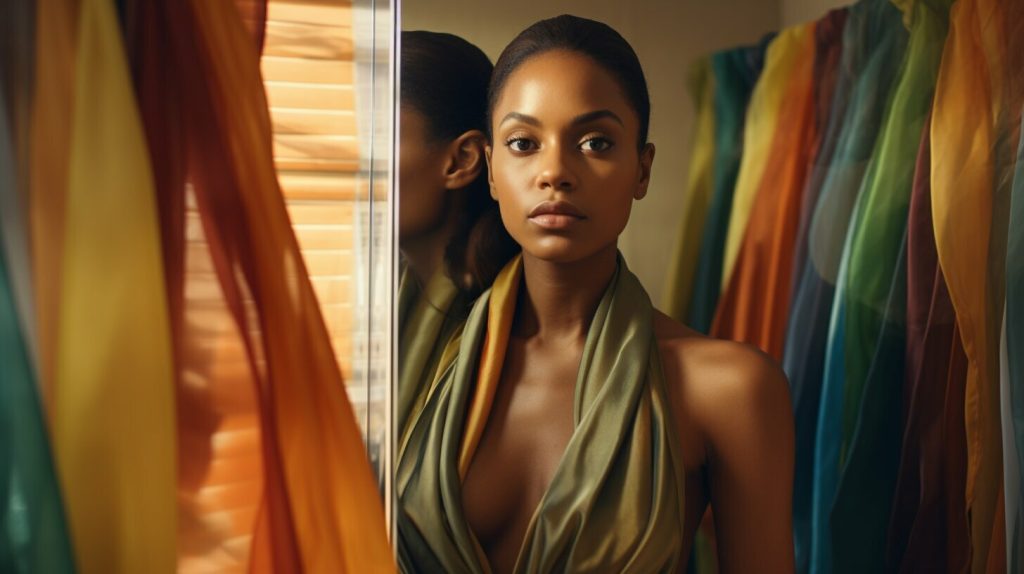
Remember, the color of your clothing isn’t the only factor to consider. You also want to pay attention to the texture, pattern, and finish of your clothing. For example, shiny fabrics like satin and metallics can wash out cool undertones, while matte textures like cotton and linen can complement them. Similarly, patterns like plaids and stripes can clash with warm undertones, while florals and paisleys can enhance them.
By taking the time to understand your skin undertones and choosing colors and textures that complement your complexion, you can create a wardrobe that highlights your natural beauty and showcases your personal style.
Incorporating Fashion Color Theory in Your Wardrobe
Now that you understand which colors work best for your skin tone, it’s time to incorporate fashion color theory into your wardrobe. By following these simple tips, you can create a stylish and cohesive look that highlights your unique beauty.
Build a Fashion Color Palette
Start by building a fashion color palette that complements your skin tone. Use the colors that you have identified as your most flattering shades and mix and match them to create bold and creative outfits. Don’t be afraid to experiment with different hues and tones to create a unique color scheme that reflects your personal style.

Choose the Right Pieces
When choosing clothing items, consider their color and how they will complement your skin tone. Stick to colors from your fashion color palette and use neutral shades as a base. For example, if you have warm undertones, try adding pops of orange or red to your outfits. If you have cool undertones, opt for shades of blue or green.
Accessorize with Complementary Colors
Accessories are a great way to incorporate complementary colors into your outfits. Use scarves, belts, and jewelry to add pops of color that match your fashion color palette. For example, if your palette includes shades of pink, try adding a pink hat or scarf to your outfit.
Consider Patterns and Textures
Patterns and textures can also play a role in incorporating fashion color theory into your wardrobe. Look for clothing items that feature patterns and textures that include colors from your fashion color palette. This will help to create a cohesive and stylish look that highlights your skin tone.
By incorporating fashion color theory into your wardrobe, you can create a polished and put-together look that highlights your natural beauty. Use your knowledge of skin undertones, fashion color palettes, and complementary colors to create a wardrobe that reflects your personal style and enhances your individuality.
The Importance of Embracing Your Personal Style
Building your personal style is an ongoing process that involves understanding yourself and identifying what makes you feel confident and comfortable. One crucial element of this process is understanding how fashion color theory can enhance your wardrobe and allow you to express your individuality.
By undergoing a fashion color analysis, you can determine your unique color palette and discover which hues complement your skin tone. This knowledge will guide you in selecting the right pieces to create a fashion-forward wardrobe that reflects your personality and style.
Fashion Color Scheme for Skin Tone
The fashion color scheme for your skin tone is essential in creating a harmonious and cohesive wardrobe. The colors you choose can significantly impact your overall look and how others perceive you.
Warm undertones, for example, typically look best in earthy and warm colors, while cool undertones complement jewel-toned hues. Understanding which color scheme works best for your skin tone will enable you to create a wardrobe that highlights your beauty and individuality.
FAQ
Q: What is fashion color theory?
A: Fashion color theory is the study and application of colors in the realm of fashion. It involves understanding how different colors interact, complementing each other, and enhancing various skin tones and overall aesthetics.
Q: What is fashion color analysis?
A: Fashion color analysis is the process of determining which colors look best on an individual based on their unique coloring, including hair, eye, and skin color. By identifying your color palette, you can create a harmonious and cohesive wardrobe that brings out your natural beauty.
Q: How do skin undertones affect fashion?
A: Skin undertones play a crucial role in determining what colors will flatter your complexion. Discover whether you have warm, cool, or neutral undertones, and learn how to use this knowledge to select the most flattering shades for your skin tone.
Q: How can I choose colors that suit my complexion?
A: Now that you understand your skin undertones, it’s time to explore which colors work best for your complexion. We’ll provide a detailed guide on how to choose the right hues to enhance your natural beauty and create a balanced and stylish look.
Q: How do I create a fashion color palette?
A: Building a fashion color palette is an essential step in designing a cohesive collection. Learn how to create a harmonious palette that complements your target audience’s skin tones, ensuring your designs are both visually appealing and flattering.
Q: What is the fashion design process?
A: Get an inside look into the fashion design process, from concept development to fabric selection and garment construction. Gain valuable insights into how fashion designers incorporate color theory and skin tone matching into their collections.
Q: Should I hire a freelance fashion designer?
A: Consider hiring a freelance fashion designer to bring your fashion collection to life. Discover the benefits and advantages of working with a professional who can provide expertise in color theory, skin tone matching, and overall design direction.
Q: How does color theory apply to fashion?
A: Delve deeper into the world of color theory and its application in the realm of fashion. Learn about color harmonies, complementary colors, and how to create impactful and visually appealing outfits using different color combinations.
Q: How can I dress according to my skin tone?
A: Discover practical tips and tricks for dressing according to your skin tone. Whether you have warm, cool, or neutral undertones, we’ll provide valuable insights on how to style your outfits to enhance your natural complexion and create a polished and put-together look.
Q: How can I incorporate fashion color theory in my wardrobe?
A: Learn how to apply fashion color theory to your everyday wardrobe. From selecting the right pieces to accessorizing with complementary colors, we’ll guide you on how to create a versatile and stylish wardrobe that highlights your unique beauty.
Q: How can I embrace my personal style?
A: Building your personal style is an ongoing process. By embracing fashion color theory and understanding how it relates to your skin tone, you can confidently express yourself through fashion and create a signature style that reflects your personality and individuality.
